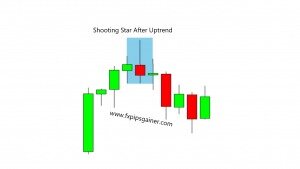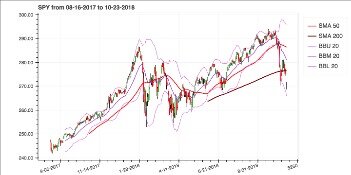It is important to load standardized data such as sigma, the mean position, mean
position for negative or bearish examples, and the mean position for bullish
examples. For the study, we split 80% into a training
set and 20% into a test set. Using the kernel function, we predict the data points in
the test set. Traditionally, the two most widely used approaches to analyze stock market data are fundamental and technical analysis [9]. Fundamental analysis relies on the concept of intrinsic value, which means that the current price is based on quantitative and qualitative information.

While there were very few previous works that had performed on DAX data, it would be difficult to recognize if the model they proposed still has the generality if migrated on other datasets. The system design and feature selection logic are fascinating, which worth referring to. Their findings in optimization algorithms are also valuable for the research in the stock market price prediction research domain. It is worth trying the Bat algorithm (BA) when constructing neural network models. After the principal component extraction, we will get the scale-reduced matrix, which means i most effective features are converted into j principal components for training the prediction model.
The dataset
Ince and Trafalis in [15] targeted short-term forecasting and applied support vector machine (SVM) model on the stock price prediction. Their main contribution is performing a comparison between multi-layer perceptron (MLP) and SVM then found that most of the scenarios SVM outperformed MLP, while the result was also affected by different trading strategies. In the meantime, researchers from financial domains were applying conventional statistical methods and signal processing techniques on analyzing stock market data.
How Machine Learning (ML) and Deep Learning Applications Drive … – Acceleration Economy
How Machine Learning (ML) and Deep Learning Applications Drive ….
Posted: Sun, 14 May 2023 12:00:00 GMT [source]
RAF algorithm achieved a relatively high true-positive rate while the poor performance in predicting negative labels. For our proposed LSTM model, it achieves a binary accuracy of 93.25%, which is a significantly high precision of predicting the bi-weekly price trend. We also pre-processed data through PCA and got five principal components, then trained for 150 epochs. The learning curve of our proposed solution, based on feature engineering and the LSTM model, is illustrated in Fig. McNally et al. in [27] leveraged RNN and LSTM on predicting the price of Bitcoin, optimized by using the Boruta algorithm for feature engineering part, and it works similarly to the random forest classifier. Besides feature selection, they also used Bayesian optimization to select LSTM parameters.
Predicting the direction of stock market prices using tree-based classifiers
Not only the feature extension method is helpful to guarantee we do not miss the potentially correlated feature, but also feature selection method is necessary for pooling the effective features. The more irrelevant features are fed into the model, the more noise would be introduced. Each main procedure is carefully considered contributing to the whole system design. The novelty of our proposed solution is that we will not only apply the technical method on raw data but also carry out the feature extensions that are used among stock market investors.

The best part of this paper is the feature engineering and optimization part; we could replicate the methods they exploited in our data pre-processing. Hafezi et al. in [7] built a bat-neural network multi-agent system (BN-NMAS) to predict stock price. They also applied the Bat algorithm (BA) for optimizing neural network weights. The authors illustrated their overall structure and logic of system design in clear flowcharts.
A comparative study on trend forecasting approach for stock price time series
Some of the previous works involve news data to perform sentiment analysis and exploit the SE part as another system component to support their prediction model. Atsalakis and Valavanis in [1] proposed a solution of a neuro-fuzzy system, which is composed of controller named as Adaptive Neuro Fuzzy Inference System (ANFIS), to achieve short-term stock price trend prediction. Not only did they compare their proposed system with the popular data models, but also compared with investment strategies. While the weakness that we found from their proposed solution is that their solution architecture is lack of optimization part, which might limit their model performance. Since our proposed solution is also focusing on short-term stock price trend prediction, this work is heuristic for our system design.
Technical analysis is an essential tool for any trader looking to maximize their chances of success in the binary options market. By studying past market trends and applying a range of indicators and tools it’s possible to gain valuable insight into potential future movements. The datasets generated during and/or analyzed during the current study are available from the corresponding author on reasonable request. The black line is the 20-day average price and the band is the 95% confidence interval also known as Bollinger Band. Bollinger band is essentially an average price of a security and its 95% confidence interval which means 95% of the times the security price remains inside this band.
We found that there was no statistically significant
difference between using machine learning and using technical analysis. In up
market periods, machine learning will outperform technical analysis. However, if the
market is a down market it is more beneficial to use technical analysis.
There are numerous features said to be effective from the financial domain, and it would be impossible for us to cover all of them. Thus, how to appropriately convert the findings from the financial domain to a data processing module of our system design is a hidden research question that we attempt to answer. The latest work also proposes a similar hybrid neural network architecture, integrating a convolutional neural network with a bidirectional long short-term memory to predict the stock market index [4]. While the researchers frequently proposed different neural network solution architectures, it brought further discussions about the topic if the high cost of training such models is worth the result or not.
Technical analysis and stock return predictability: An aligned approach
In the snapshot above we can see that prices increased by more than 1% (our threshold) on 19th and 20th Sep 2022. Hence the label created in the column “Change” shows +1 for the 16th and 19th (the previous trading days). On 21st Sep, the price declined more than 1%, therefore label for 20th Sep was -1. The price change on 22nd Sep was a mere -0.63% (less than our threshold of 1%), hence the label for 21st Sep is 0. Hence, once we have the 10 stocks, we will wait for 3rd January 2019 and buy at the Open price, hold for 7 days, and sell on the 7th trading day end Closing price.
The vise-versa is true when trading volume was higher where we
would trade on volume 60% of the time over close prices. The algorithm is shown below before tweaking weights due to neural
network parameter [23-30]. In recent years, there has been a growing interest in machine learning based techniques. The main reason is that in contrast to conventional methods, these techniques are more suitable to handle complex data with non-linear relationships. Within this field, artificial neural networks (ANNs) are a very popular approach and have been applied in numerous works.

The primary limitation of their research was that they only analyzed 20 U.S.-based stocks, the model might not be generalized to other stock market or need further revalidation to see if it suffered from overfitting problems. We have built the dataset by ourselves from the data source as an open-sourced data API called Tushare [43]. The novelty of our proposed solution is that we proposed a feature engineering along with a fine-tuned system instead of just an LSTM model only. We observe from the previous works and find the gaps and proposed a solution architecture with a comprehensive feature engineering procedure before training the prediction model. With the success of feature extension method collaborating with recursive feature elimination algorithms, it opens doors for many other machine learning algorithms to achieve high accuracy scores for short-term price trend prediction.
Based on the literature review, we select the most commonly used technical indices and then feed them into the feature extension procedure to get the expanded feature set. We will select the most effective i features from the expanded feature set. Then we will feed the data https://trading-market.org/a-hybrid-stock-trading-framework-integrating-technical-analysis-with-machine-learning-techniques-2020/ with i selected features into the PCA algorithm to reduce the dimension into j features. After we get the best combination of i and j, we process the data into finalized the feature set and feed them into the LSTM [10] model to get the price trend prediction result.
The program just calculates the trailing average of the stock price over time. For each method, there were 120 total observations over the total sample period
from January 2007 to December 2016. Machine learning had the highest overall
average monthly return at 1.19%. During this same time-period, the S&P 500 had an
average monthly return of .48%. The monthly average returns for the technical
indicators ranged from .83% to -1.21%.
- By integrating machine learning into your existing technical analysis framework you can leverage the power of AI to identify patterns and trends that may not be visible to the human eye.
- It proved the effectiveness of our proposed feature extension as feature engineering.
- We utilized an LSTM model and added a conversion procedure for our stock price dataset.
Another advantage of this work is that they designed a detailed procedure of parameter adjustment with performance under different parameter values. The clear structure of the feature selection model is also heuristic to the primary stage of model structuring. One of the limitations was that the performance of SVM was compared to back-propagation neural network (BPNN) only and did not compare to the other machine learning algorithms.